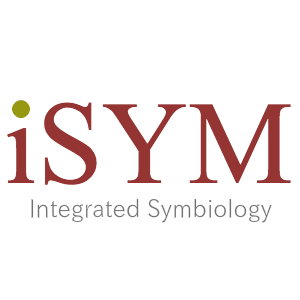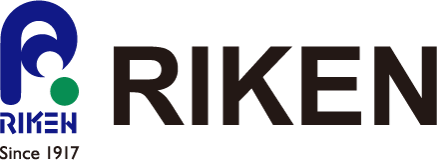iSYM People 3...
Our work will contribute to uncover the mutualistic relationship and interaction between us humans and symbiotic bacteria
Dr. Taichi Umeyama
Laboratory for Microbiome Sciences, RIKEN Center for Integrative Medical Sciences
We interviewed a bioinformatics specialist Dr. Taichi Umeyama who analyzes an enormous and complicated data to reveal biological processes. Taichi is from the Laboratory for Microbiome Sciences and analyzes the host-microbial interaction by using next-generation sequencers.
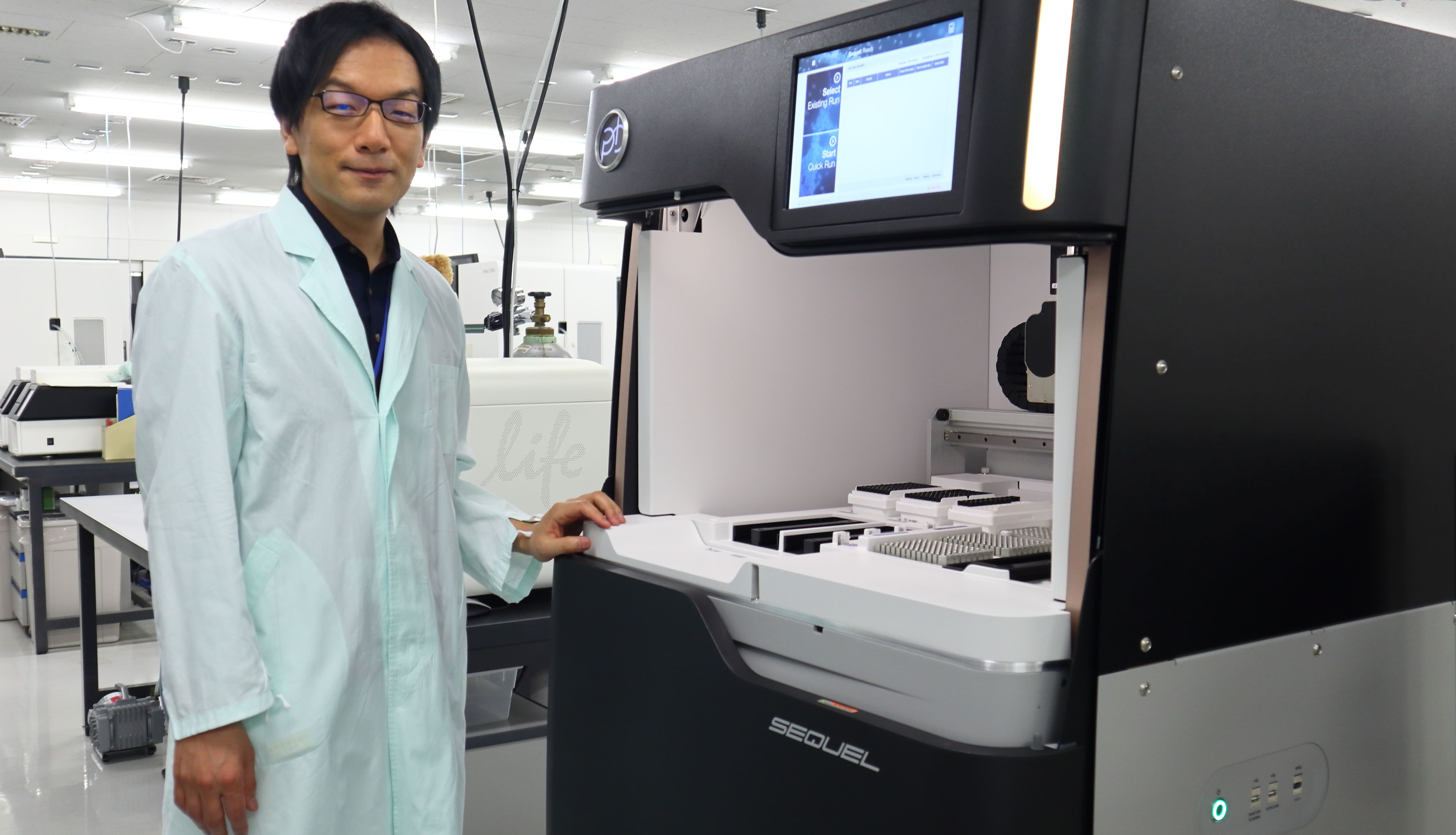
At RIKEN Yokohama campus
━━━What is your current research?
- I’m working on the studies of host-microbe interactions especially focusing on the analyses of the structure of human gut microbiome. For this purpose, I’m engaged in DNA sequence analysis using next-generation sequencing technology and bioinformatics analysis to handle a vast amount of DNA sequence data.
- I belong to the laboratory for Microbiome Sciences, and one of our goals is to provide highly-accurate data for the databases of human gut microbiome. DNA sequence databases are bases for the study of microbiome. If no useful databases are available, we can’t make sense out of sequence data alone, and that a problem of determining the structure of microbiome is far beyond the reach of us. Since we will provide our data from RIKEN Japan to the world, we think that sequence data of Japanese gut microbiome based on highly accurate metagenome analysis is the priority issue. To address this, we are using long-read sequencing as well as short-read sequencing technologies especially for the analysis of bacterial genomes. Since bacteria have a circular genome, the sequence reads are assembled in a circular structure if the reads are sufficient quantity, correctly connected together and covering entire regions of the genome. We are now investigating several experimental processes and informatics pipelines to maximize the cost-effectiveness and try to progress this task as efficiently as possible. Our high-quality Japanese gut microbiome data makes it possible to reveal, for example, how gender and age affect microbiome, and also by comparing Japanese data to American, European and Asian data lead to a better understanding of how diet and lifestyle affect intestinal microbes, and vice versa. Our work will contribute to uncover the mutualistic relationship and interaction between us humans and symbiotic bacteria.
━━━What kinds of techniques do you use? Please briefly explain them.
- We are using next-generation sequencing platforms PacBio Sequel and Illumina MiSeq, and analyzing the structure and function of microbiome by 16S ribosomal RNA (rRNA) and metagenome analysis. 16S rRNA genes are usable for ascribing a strain to the phylogenetic tree, so the number of 16S rRNA sequences observed in a sample represents the composition of microbial communities.
The advent of next-generation sequencing technologies enabled us to collect sufficient number of 16SrRNA sequences to obtain statistically significant conclusions. The third-generation long-read sequencing technologies bring us great advantage both for 16S rRNA and metagenome analyses. First, 16S rRNA regions are approximately 1.5kb but read length of short-read sequencing technologies are only several hundreds of bases and unable to cover the entire region. Therefore, phylogenetically close bacteria are hard to discriminate, but read length of PacBio Sequel easily cover entire 16S rRNA regions, makes it available for discriminating closely related species even in a strain level. Second, in metagenome analysis, we randomly sequence genomes not just 16S rRNA region, and although metagenome analysis requires lots of sequences and costs more than 16S rRNA analysis, this analysis can reveal the abundance of genes. From metagenome data, we can estimate what function of genes are enriched in a bacterial community. In this analysis, we first assemble the sequence reads to obtain large fragments, and then estimate a function of genes encoded in the fragments, so the longer the assembled fragments are, the more highly accurate estimation we can perform. Therefore, long-read sequencing technologies are indispensable for us to perform highly accurate metagenome analysis.
━━━Please tell us about bioinformatics more. What excites you the most?
- I think there are two fascinating aspects of bioinformatics. First, to understand complex biological systems, cataloging lots of biological components or scrutinizing only one component are both insufficient. Comprehensive and quantitative bioinformatics analysis of biological components and connectivity among them provide us clues to organize a vast amount of information in complex biological systems. That’s also a lot of fun for me to design next experiments from the hypothesis proposed from the bioinformatics analysis. Second, explicitly describing biological process and building simulation model help us to get to correct understanding of biological systems. If we can correctly describe biological process and properly build simulation model, the model not only recapitulate experimentally observed results but predict behaviors of the biological system under new conditions. But if the prediction is incorrect, it means that the model and our understanding of biological systems are also incorrect, and the model and our understanding of biological systems should be modified. I think this repetitive testing through building approach leads us to better understanding of biological systems.
━━━How did you become interested in your current field of research?
- More than 10 years ago, I started my scientific career in a protein engineering research. I think recent application of CRISPR/Cas system in genome editing is the most attractive example in protein engineering. At that time, I was interested in diverse function of proteins encoded in microbial genomes, and tried to develop highly specific biosensor systems or material production. Protein engineering research starts from screening microbes that possesses a protein of interest, purification of proteins, sequencing amino acids, and then we can start cloning genes. Although it was a lot of fun, the experiments took a lot of time. At the same time, DNA sequence capability dramatically increased and experimental cost to complete microbial genome significantly decreased. From this evolution of DNA sequencing technology, I thought that experimental design of protein engineering studies would be totally renewed and genome sequencing would be an indispensable step to find out a protein of interest.
- Even though the increase of capability of genome sequence is great advantage, we still need to isolate the microbes before DNA sequencing. In fact, 99% of microbes are unculturable, and a vast number of genes is remaining as a promising arsenal of materials. Just then, I found a novel term “metagenome” in a paper and microbial genome sequencing was carried out without isolation and culture of microbes. I thought that DNA sequencing technology and metagenome approach would be game changers for future protein engineering and decided to enter genome science research field. At first, I was working on functional genomics studies and developed novel technology for the analysis of protein-DNA interactions genome-wide using next-generation sequencing technologies. Then I shifted to the analysis of the genome structure, and focusing on metagenome research. I now think that metagenome research has big impacts on diverse filed of science and society. This is far beyond the prediction I had more than 10 years ago.
━━━What has been your most memorable experience?
- In general, I’m very excited when I found novel things that no one knows in the world, and also when I first analyze a new type of data generated from new technologies or techniques. In RIKEN, I was very impressed from the data generated by PacBio Sequel. I think this sequencing technology has unique advances not only for long-read sequencing but for the analysis of DNA methylation. DNA methylation involves many biological systems, such as an immune system of prokaryote or gene regulation of eukaryote, so calling methylated nucleotide only by sequencing is fascinating for many researchers. I will try to develop new techniques using this sequencing technology and hope for finding novel things and contribute uniquely to scientific community.
━━━Lastly, what is your goal?
- I’m interested in building a simulation model describing mutualistic relationship and interactions between symbiotic bacteria and their host. To do this, I would like to develop unique techniques to derive data at different level of omics (genome, metagenome, transcriptome, proteome, and metabolome) in a comprehensive and quantitative manner. In the course of building and correcting the simulation model, I want to develop my understanding of biological systems closer to the truth.
━━━Thank you very much for your time, Taichi!
Thank you for reading the article.
We will keep posting iSYM People Interviews. So please keep updated!
iSYM People 2...
Plant x Microbe = 21st century's Green Revolution
Dr. Yasunori Ichihashi
Plant-Microbe Symbiosis Research and Development Team, RIKEN BioResource Research Center
This time we invited a fresh leader Dr. Yasunori Ichihashi from Plant-Microbe Symbiosis Research and Development Team. He puts his effort into improving the agriculture system in Japan by increasing the effects of plant-microbe symbiology. He talked about his ambition during the interview.
━━━Please describe your role at RIKEN.
- Since April 2018, I became a leader of Plant-Microbe Symbiosis Research and Development Team. I would like to contribute to a construction of indigenous bioresources of Japan as well as development of plant-microbe symbiosis research through participation in iSYM.
━━━Please briefly describe your current research.
- Here are three main missions in my new lab.
- 1. Construction of bioresources of microbes and plants for symbiosis studies
Since most agricultural crops grow in soil, which is one of the richest microbial ecosystems on Earth, plants and microbes are strongly associated with each other, and symbiotic microbes such as mycorrhizal fungi support plant growth. My team plans to collect beneficial rhizosphere microbes from wild or agricultural fields in Japan. In addition, we assemble current knowledge in plant-microbe symbiosis research field and construct novel bioresources of experimental plants related to the symbiosis studies. There are already resource centers of microbes and plants alone across the world, but ours will be a combination of them. Our team will provide unique bioresources of microbes and plants, facilitating the symbiosis research field. - 2. Establishment of an experimental platform for plant-microbe symbiosis research
My team will build a global standard experimental platform for the plant-microbe symbiosis studies in order to test a hypothesis as a basic approach of experimental science. It will allow us to evaluate the effect of symbiosis and dissect the detailed communication between plants and microbes at the molecular level. - 3. Assembly of agricultural information using large-scale omics analyses: Field Agri-omics
We proposed Field Agri-omics as a new analytical method for understating agriculture. Since we apply the omics analysis [comprehensive investigation of internal information within a biological sample] to the agricultural field, we call the method as “Field Agri-omics”. Analyzing data from the agricultural field allows us to reveal what’s actually happening there. Our current study showed that Field Agri-omics can identify new findings such as the mechanism of how soil solarization promotes the crop yield. Therefore, I believe that applying Field Agri-omics throughout Japan and assembling more data will eventually contribute to improvement of agriculture in Japan.
━━━What excites you the most about your current research?
- As a scientist, it’s thrilling when I discover something new which was unknown before. Moreover, collaborative research is very exciting. Through the experiences of collaboration, I realized that building connections is essential for successful collaboration but also how difficult it can be to establish relationships. When we decided to perform Field Agri-omics approach, for example, we needed to work with many experts from various research backgrounds as well as farmers. Since both researchers and farmers have a certain pride in their work, we often disagreed over the experimental procedures such as designing field plot, the schedule and detailed methods of agricultural procedure, etc. These experiences made me learn that it’s important to have an open mind and show an eagerness to learn when we work with others. To accomplish this, I try to keep Shoshin (Zen phrase, Begginer’s mind) all the time.
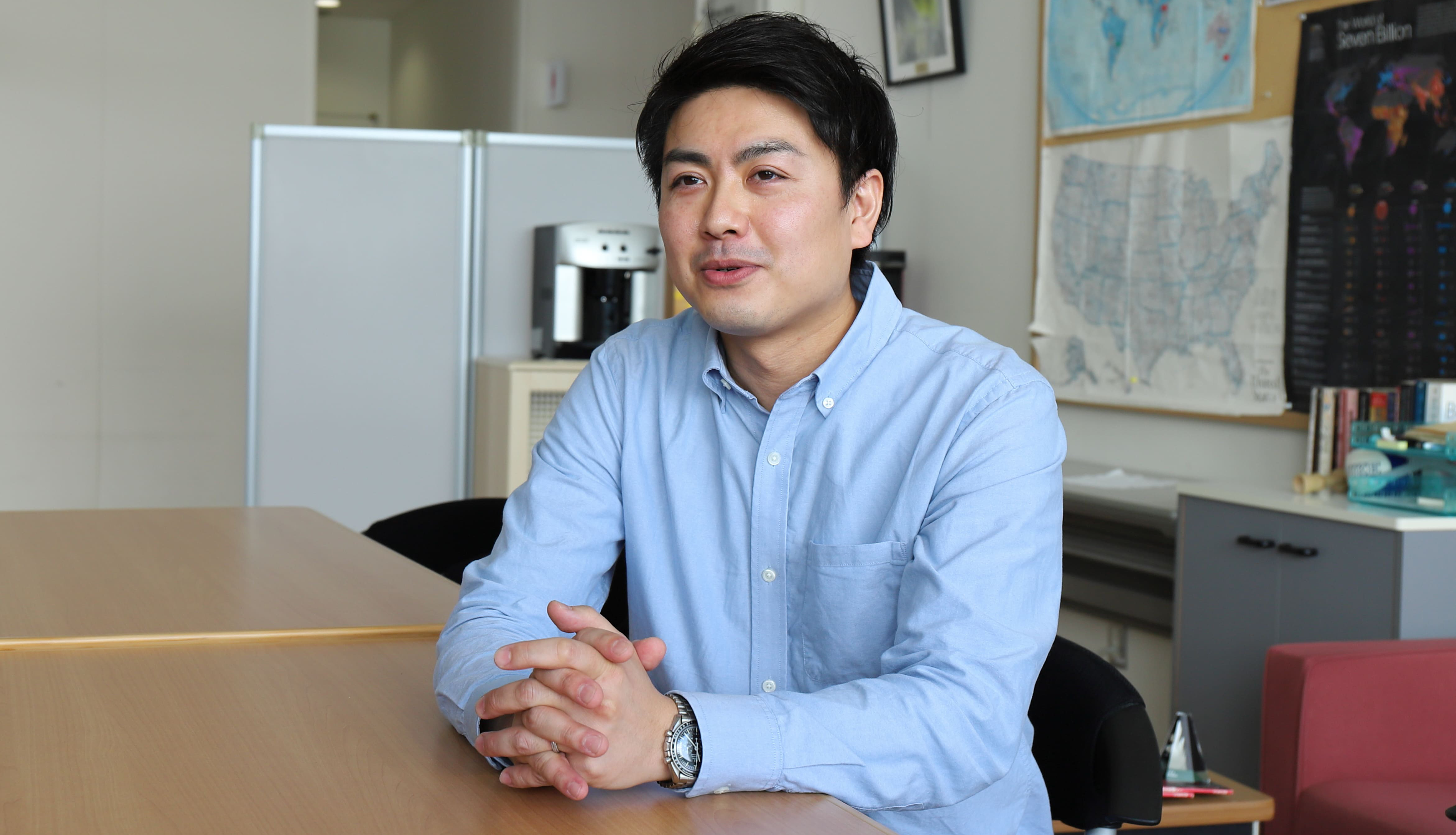
At RIKEN Yokohama campus
━━━Why did you decide to become a scientist?
- I have a great interest in international cooperation and contribution to society. Actually, I organized a club to discuss about social issues with other students and teachers when I was an undergraduate student. I wanted to join JICA [Japan International Cooperation Agency, a government agency that provides developmental assistance to developing countries for the Japanese government] but I just realized that I couldn’t help many people with my own skills at that time. Rather, scientific discoveries have a potential to contribute to helping humankind globally. At that time science was my strength, so becoming a scientist was the only way for me to accomplish my mission in life.
━━━Why do you think Symbiosis reseach is important?
- Originally, I studied parasitic plants to contribute to solve food crisis in Africa, but there were already many researchers in that field so I wanted to open up a new research field by myself. Then I came up with an idea called “superorganism” that captures plant and microbiomes as one living organism. As the term symbiosis indicates, plants do not live alone like they do in the lab. Plants and microorganisms live together in the agricultural field and I believe that it’s important to understand the whole system. In addition, symbiosis exists everywhere, not only in plant-microbe interactions. A life never survives alone. Each individual interacts with each other. Science had been proceeding with reductionism and breaking things into a very small unit but science hasn’t focused on the so-called symbiotic relationship enough. The relationship doesn’t exist as a tangible object, which makes it challenging to study. But I believe that the most cutting-edge scientific technologies can break through such phenomena. We understand each individual phenomenon enough, so I think it’s a time to start dissecting the complicated relationship between individuals. When our understanding advances, I believe that we will be able to understand at system and network levels. For example, agriculture is very complicated so it’s impossible to understand fully by only understanding individual components like crops and weather. I believe that research of symbiosis will deepen our knowledge of agriculture systems. This is also being applied to understand, for example, the relationship between humans and their gut-living organisms.
━━━Lastly, please tell us about your goal.
- “Plant x Microbe = 21st century’s Green Revolution”
- I would like to research on the symbiotic relationship between plants and microbes and propose new agricultural methods that are friendly for the earth. The prior green revolution in the last century saw improved productivity of crops and development of new crop varieties. However, people depended too much on chemical fertilizer and this has damaged the land, for example, by soil contamination. Therefore, our generations must think about natural nutrient cycles as a next-generation agriculture. I believe that revealing the connection between plants and microbes will lead us to a 21st century Green Revolution.Especially, I focus on Mycorrhizal fungi which form symbiotic relationships with 70 to 80% of plants and most of them are thought to be a growth promotor. Even though there are many researchers who study Mycorrhizal fungi, we stilldon’t know the detailed functions of them in agricultural field. I believe that maximizing the effects of plant-microbe symbiology including Mycorrhizal fungi to the agriculture will contribute to the 21st green revolution.
━━━Thank you very much for your time, Dr. Yasunori Ichihashi! New leader sets sail on his voyage!
Thank you for reading the article.
We will keep posting iSYM People Interviews. So please keep updated!
iSYM People 1...
Push the field of bio-imaging technology further
Dr. Arno Germond
Laboratory for Comprehensive Bio-imaging, RIKEN Quantitative Biology Center
On February 22nd, we had an interview with a member of iSYM, Dr. Arno Germond from QBiC RIKEN. He is a bio-imaging engineer and also has a background of ecology and evolution. He is trying to expand the potential of the bio-imaging field. During the interview, he talked enthusiastically about his research and goals.
━━━Please briefly describe your current research.
- I’m interested in the relationship between phenotype and genotype. These are two different layers of the same system. To understand a living system, the gene expression information is very informative; however, you need to destroy the cells to access this information. My idea is that we can access gene expression information by using non-invasive bio-imaging technique. So, my research aims at developing a mathematical model to predict the gene expression of single living cells from label-free spectral images. I hypothesized that the chemical spectral profile of cells (a kind of phenotype information) can be linked to gene expression through the intricate network of the cell. I established a model using a large dataset of E.coli cell lines, and successfully predicted the expression of thousands of genes from the sole spectral signatures of living cells. This achievement is a first step toward unravelling the complex relation that exist between Raman spectral data and transcriptomic data.
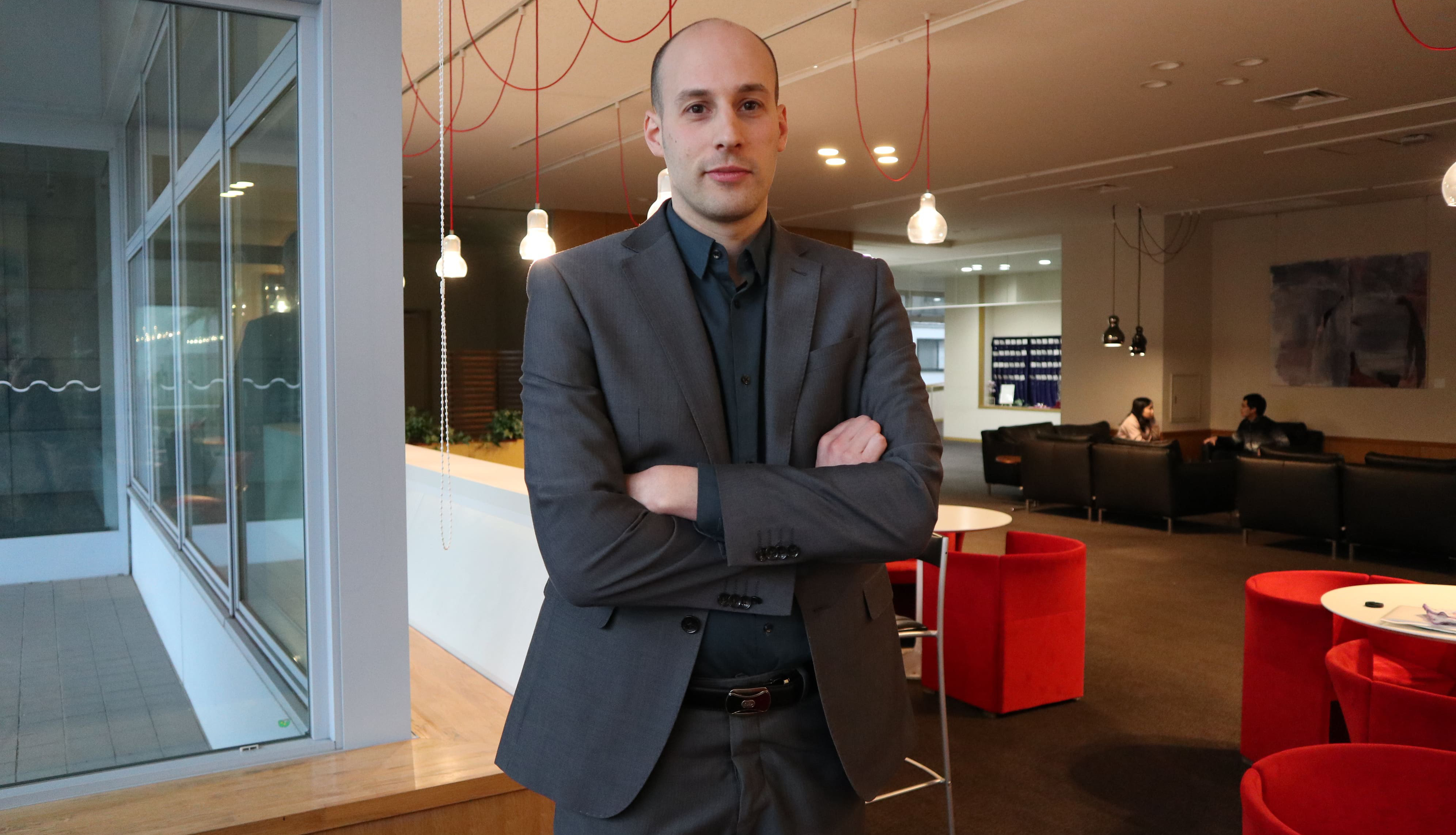
At cafe area of RIKEN Yokohama campus
━━━When and How did you join RIKEN?
- I joined RIKEN in 2015. I was very excited to be given the opportunity to learn from expertsof the bio-imaging field. In RIKEN, I can establish my own long-term research project with sufficient resources … I think it’s a rare chance in the academic field.
━━━How did you become interested in this field of research?
- I studied ecology and evolution when I was a graduate student. Since then, I have been working on the theme of the relationship between phenotype and genotype. As a student, I learnt about the research of C.H. Waddington. He was obsessed with the idea cells or biological things could have different cell states and the below there were some epigenetic regulation going on. I thought it’s an interesting idea. At that time, when I was a graduate student, everyone started doing genomics. But by doing only genomics, it’s very difficult to predict phenotype. I wanted to understand the link between them and how we can do it. But through doing experiments, I realized that analyzing the relationship between genotype and phenotype required tedious work (looking at the morphology and measuring by hand). Then I thought we definitely need a measuring tool of phenotype which also can give us information of the genome. This is why I became interested in bio-imaging.
━━━What excites you the most about your current research?
- I’m a very curious and ambitious person. Since I joined RIKEN, I’ve been tackling new challenges. I have a biological background, but I had never built microscope before, but I started building one from scratch. I also had to learn coding language to establish a pipeline analysis. I’m now taking the best expertise from the field of Raman spectroscopy and using it to develop novel analytical approach. Each of my published work open new perspectives in terms of methodological and conceptual aspects. I hope to push the field of bio-imaging much further.
━━━Our project focuses on symbiosis research. How do you think your research can apply for the study of symbiosis?
- My role in the project is to develop the Raman spectroscopy platform and pipeline that go with it. Now I’m looking for collaborators that would provide us samples to unravel the biology of symbiosis.
━━━Lastly, please tell us about your professional and personal goals.
- I want to have my research team in the future and tackle the questions of analyzing human cells and biological samples by using bio-imaging techniques.
━━━Thank you very much for your time, Dr. Arno Germond!
Thank you for reading the article.
We will keep posting iSYM People Interviews. So please keep updated!

